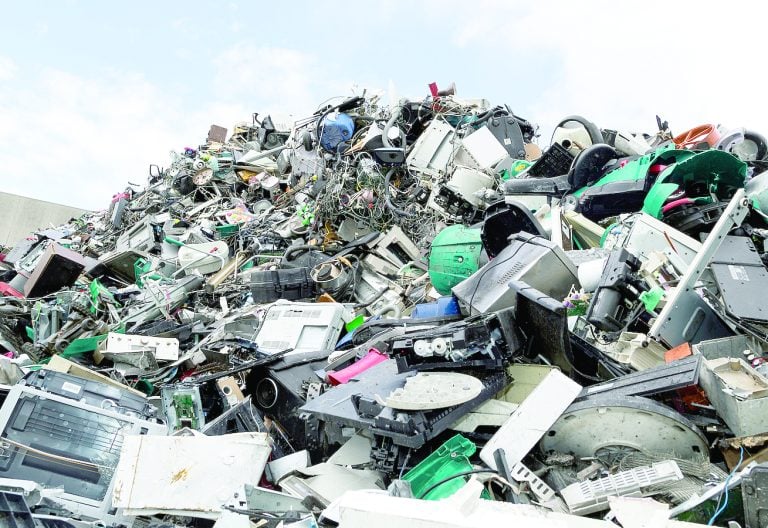Urgent action needed to avert e-waste disaster

With the rapid expansion of the digital space and increasing reliance on electronic devices, Africa faces a looming e-waste crisis unless urgent action is taken, and Kenya is among those nations that will be affected the most given its strategic location as entry into the region.
Despite generating the least e-waste per capita globally, the continent struggles with weak recycling infrastructure, regulatory gaps, and an influx of low-quality electronics, according to the latest Global E-Waste Monitor 2024 report.
The report reveals that 62 billion kilogrammes of e-waste were generated worldwide in 2022, averaging 7.8 kilograms per person. However, only 22.3 percent of this waste was properly collected and recycled. In Africa, the situation is even more dire, with the continent formally recycling less than 1 percent of its total e-waste, raising serious environmental and health concerns.
Despite efforts to address the crisis, only 42 per cent of countries globally have formal policies or regulations governing e-waste management. Of these, 67 nations have adopted the Extended Producer Responsibility (EPR) principle, which holds manufacturers accountable for the disposal of their products.
Kenya is among the few African nations to implement EPR regulations, requiring electronics manufacturers and importers to take responsibility for proper waste management. However, enforcement remains a significant challenge.
Speaking at the East African Communications Organization (EACO) forum, Kenya’s Cabinet Secretary for Information, Communications, and the Digital Economy, William Kabogo called for stricter regulations. He noted ongoing efforts by the State to strengthen the country’s regulatory framework, urging regional leaders to align national policies with global standards.
Electronic waste contains valuable materials such as copper, gold, and rare earth metals, which can be recovered and reintegrated into the supply chain. However, much of Africa’s e-waste remains untapped due to the dominance of informal recyclers operating in hazardous conditions without protective gear. Exposure to toxic substances such as lead, mercury, and cadmium poses significant health risks, while the absence of formal regulations results in most e-waste ending up in landfills or open dumpsites.
Mary Mungai, chairperson of the Communications Authority of Kenya (CA), described e-waste as a “double-edged sword.”
“When disposed of, it generates a waste stream that contains both hazardous and valuable materials,” she said, emphasizing the need for formal recycling systems to extract value safely and efficiently.
One of the key challenges identified in the report is the influx of second-hand and substandard electronics into African markets. While these imports provide affordable technology for consumers, they significantly contribute to the region’s growing e-waste burden.
“We must strengthen enforcement of quality inspection frameworks at the various ports of entry so that we don’t become a dumping ground for low-grade devices that contribute to the e-waste menace,” she stated.
According to the Ellen MacArthur Foundation, over 60 percent of Africa’s e-waste originates from foreign imports, putting additional strain on already overwhelmed waste management systems.
Mungai called for stringent enforcement of quality control measures at entry points, warning against Africa becoming a dumping ground for low-grade electronics. She urged authorities to strengthen inspection frameworks to prevent the importation of devices that quickly turn into waste.
Despite the crisis, experts believe Africa can turn e-waste into an economic opportunity through investments in formal recycling infrastructure, public-private partnerships, and regional policy harmonization. Initiatives such as the WEEE Centre, which refurbishes old electronics for reuse and facilitates recycling across the continent, offer promising solutions.














